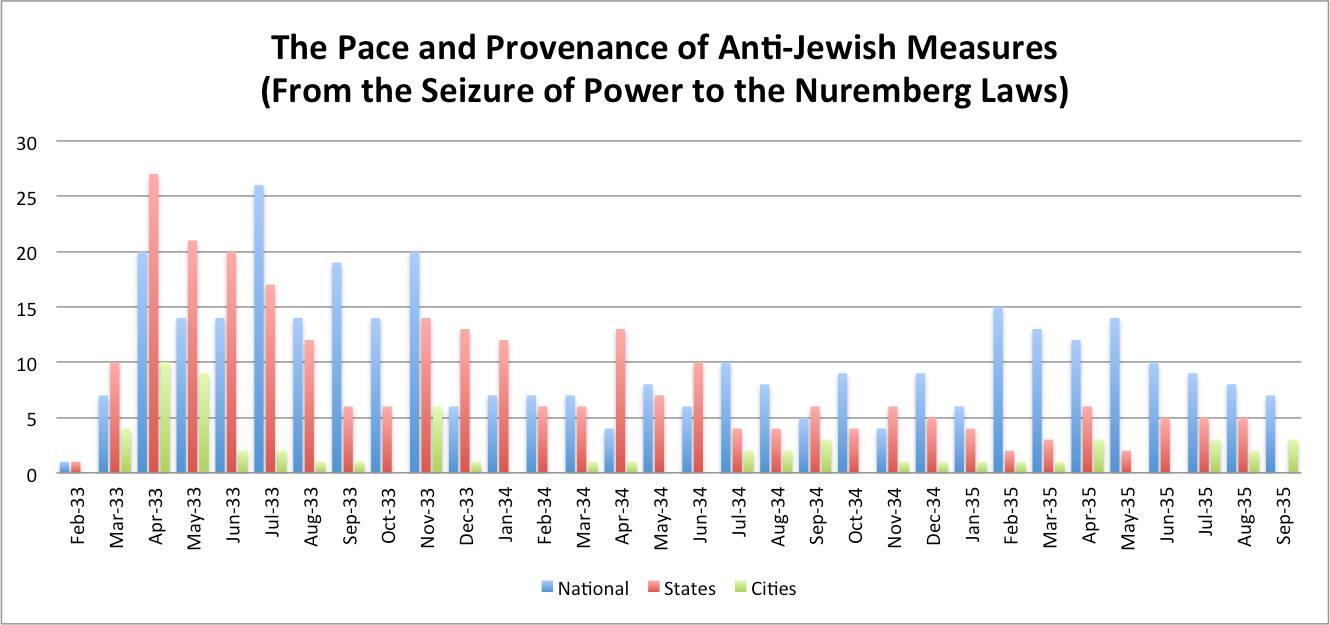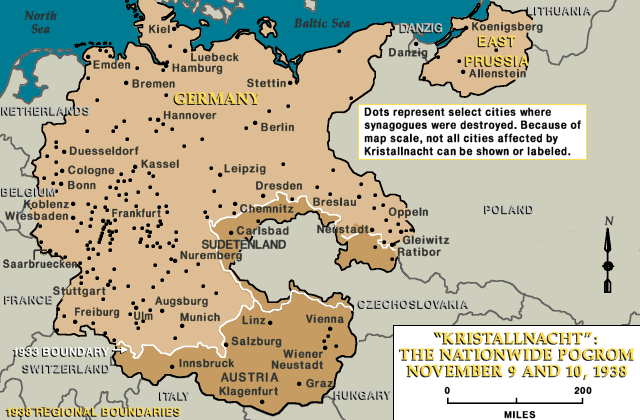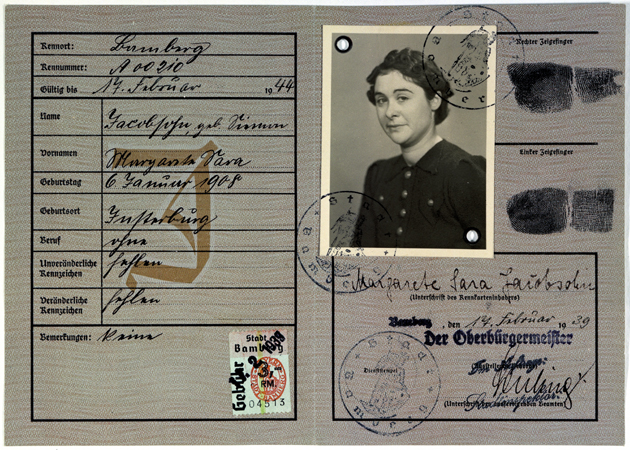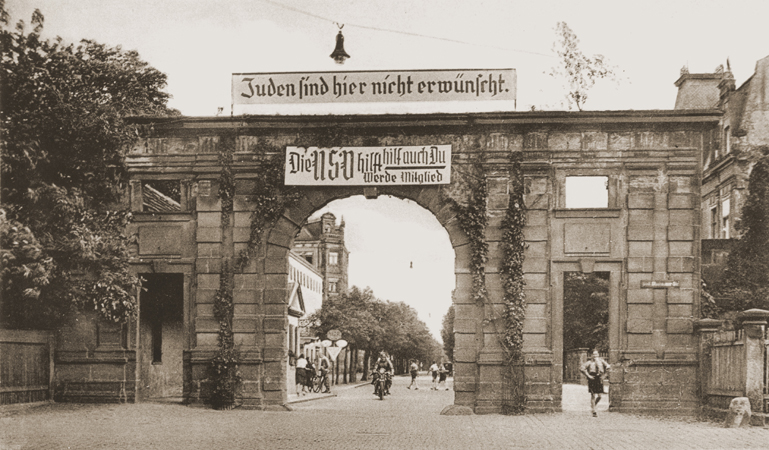Read for discussion in class: Bergen, War
& Genocide, chapters 2-3; and I. The Nazi Seizure of Power Map: Reichstag Election Returns, 1920-1933 II. Discussion: Legislating the Holocaust Image: Bernhard Lösener (1890-1952) III. Phases
of Antisemitic Exclusion, 1933-1941 List: Principal Acts of Anti-Jewish
Legislation in Germany, 1933-1942
Interactive Map: Destroyed and Desecrated Synagogues during the November Pogrom, 1938 (H.W. Smith) Chart: Prosecuting Race Defilement
(Rassenschande) in Würzburg, 1933-1945
|
This passport belonged to Margarete Jacobsohn, who lived in the Franconian town of Bamberg. She and her husband, Erich Jacobsohn, were able to emigrate from Germany on 13 May 1939, aboard the SS St Louis. When the ship was forced to return to Europe, the Jacobsohns were given refuge in Rotterdam, the Netherlands, then in an internment camp at Heijplatte. In November 1939, their quota number for immigration to the United States came up, and in January 1940 the Jacobsohns were able to leave again for America. In May 1940, the Netherlands were overrun by German forces, which brought all further emigration from the Netherlands to an end.. By then, the Jacobsohns had already landed in Hoboken, New Jersey (9 Feburary 1940). Note the large “J” stamped on the left-hand page. This of course identified bearer as a Jew. Notice also that her name is given as "Margarete Sara Jacobsohn." Under the “The Second Executive Order on the Law on the Alteration of Family and Personal Names,” all Jewish women not having discernibly “Jewish” names were required to adopt the middle name “Sara”; similalry-named men were required to take the name “Israel.” Image source: USHMM.
A view of the Nürnberger Tor, one of the entrances to the University of Erlangen, on top of which a banner has been placed stating that Jews are not welcome here (Juden sind hier nicht erwünscht). Below it hangs a recruitment banner for the National Socialist People's Welfare organization (Nationalsozialistische Volkswohlfahrt, or NSV). Image source: USHMM. |




